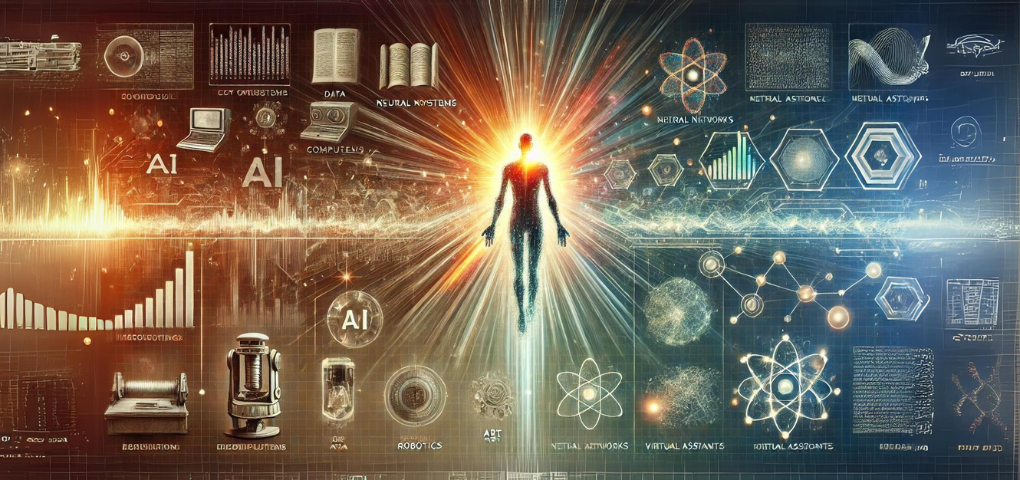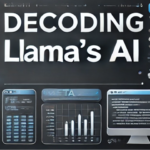In the ever-evolving landscape of technology, we find ourselves at the cusp of a new era – the age of Generative AI. This revolutionary technology is reshaping industries, redefining creativity, and pushing the boundaries of what we thought possible. In this comprehensive guide, we’ll explore the fascinating world of Generative AI, its history, applications, and potential future impact.
What is Generative AI?
Generative AI refers to artificial intelligence systems capable of creating new content, whether it’s text, images, audio, or even synthetic data. These systems leverage deep learning models and large language models to produce novel and contextually relevant output.
“Generative AI’s performance will compete with the top 25 percent of people, completing any and all tasks before 2040.” – McKinsey
This technology has become a global sensation, with applications spanning across various industries from high-tech to agriculture. Its potential to augment human capabilities is immense, as evidenced by predictions from leading research firms:
- Gartner places Generative AI at the peak of inflated expectations on their 2023 Hype Cycle for Emerging Technologies.
- Deloitte estimates the Generative AI market to reach $200 billion by 2032, representing about 20% of total AI spend.
The Historical Journey of Generative AI
While Generative AI may seem like a recent phenomenon, its roots can be traced back to the early days of artificial intelligence. Let’s take a journey through time to understand how we arrived at today’s powerful Generative AI systems.
1950s: The Dawn of Text Analytics
The 1950s marked the beginning of AI research, with early efforts focused on text analytics. Rudimentary computer programs were developed to process and analyze text data, laying the groundwork for future advancements.
1960s-1970s: Rule-Based Systems and Knowledge Bases
This era saw the development of rule-based systems and knowledge bases. Researchers aimed to encode human expertise into computer programs using explicit rules and logical reasoning, leading to the creation of expert systems.
1980s-1990s: The Rise of Natural Language Processing
Natural Language Processing (NLP) emerged as a critical field within AI during this period. Researchers developed more advanced techniques for parsing and analyzing text, paving the way for applications like machine translation and speech recognition.
2000s: Machine Learning and Big Data Revolution
The turn of the millennium brought a significant shift with the rise of machine learning and the availability of vast amounts of digital data. This era gave birth to the concept of “Big Data” and saw the development of large-scale data analytics.
2020s: The GPT Revolution
The 2020s witnessed a breakthrough with the introduction of GPT-3 (Generative Pre-trained Transformer 3), marking a significant milestone in AI and NLP. GPT-3’s ability to generate highly coherent and contextually relevant text revolutionized the field.
Understanding Large Language Models (LLMs)
At the heart of modern Generative AI lie Large Language Models (LLMs). These models are trained on vast amounts of unlabeled data and operate based on probabilistic distributions of words or sequences.

LLMs predict the next possible word in a sentence based on learned patterns from human language. Some popular LLMs include:
- OpenAI’s GPT-3, GPT-3.5, and GPT-4
- Google’s LaMDA and PaLM
- Hugging Face’s BLOOM
- Meta’s LLaMA
- NVIDIA’s NeMo LLM
Types of Generative AI Models
Generative AI encompasses various model types, each with unique characteristics and applications:
- Generative Adversarial Networks (GANs): Used for image generation and style transfer.
- Variational Autoencoders (VAEs): Employed for image generation and data compression.
- Recurrent Neural Networks (RNNs): Utilized for text generation and speech recognition.
- Long Short-Term Memory (LSTM) Networks: Effective in natural language processing tasks.
- Generative Pre-trained Transformers (GPT): Excel in a wide range of language understanding and generation tasks.
Applications of Generative AI
The applications of Generative AI span across various industries and functions:
Industries
- Marketing and Entertainment: Content creation, video game development, scriptwriting
- Education: Personalized learning, knowledge base creation, virtual labs
- Healthcare: Medical image generation, drug discovery, personalized medicine
- Manufacturing: Product design, quality control, supply chain optimization
- Software & Tech: Code generation, bug detection, IT security
Functions
- Customer Service: Chatbots, sentiment analysis, automated ticket routing
- Marketing: Content generation, personalization, A/B testing
- Human Resources: Automated resume screening, personalized learning pathways
- Sales: Lead generation, sales content creation, price optimization
- Operations & Purchase: Maintenance planning, vendor selection, supplier negotiation
Limitations of Generative AI
Despite its impressive capabilities, Generative AI has limitations:
- Context Understanding: Struggles with grasping complex contexts
- True Creativity: Lacks genuine inspiration and emotional depth
- Hallucinations: Can generate false content based on misunderstandings
- Bias and Fairness: May perpetuate biases present in training data
The Future of Generative AI
As Generative AI continues to evolve, we can expect advancements in:
- Frequent Content Creation at Speed: Enabling rapid content generation across various formats
- Natural and Intuitive Conversations: Enhancing virtual assistants and chatbots
- Personalization at Scale: Delivering tailored experiences across industries
Conclusion
Generative AI represents a transformative force in technology, with the potential to revolutionize how we work, create, and solve problems. As we navigate this new frontier, it’s crucial to harness its potential while addressing its challenges. The future is generational – are you ready to embrace it?
This comprehensive guide has explored the fascinating world of Generative AI, from its historical roots to its current applications and future potential. As this technology continues to evolve, it will undoubtedly play an increasingly significant role in shaping our digital landscape.


